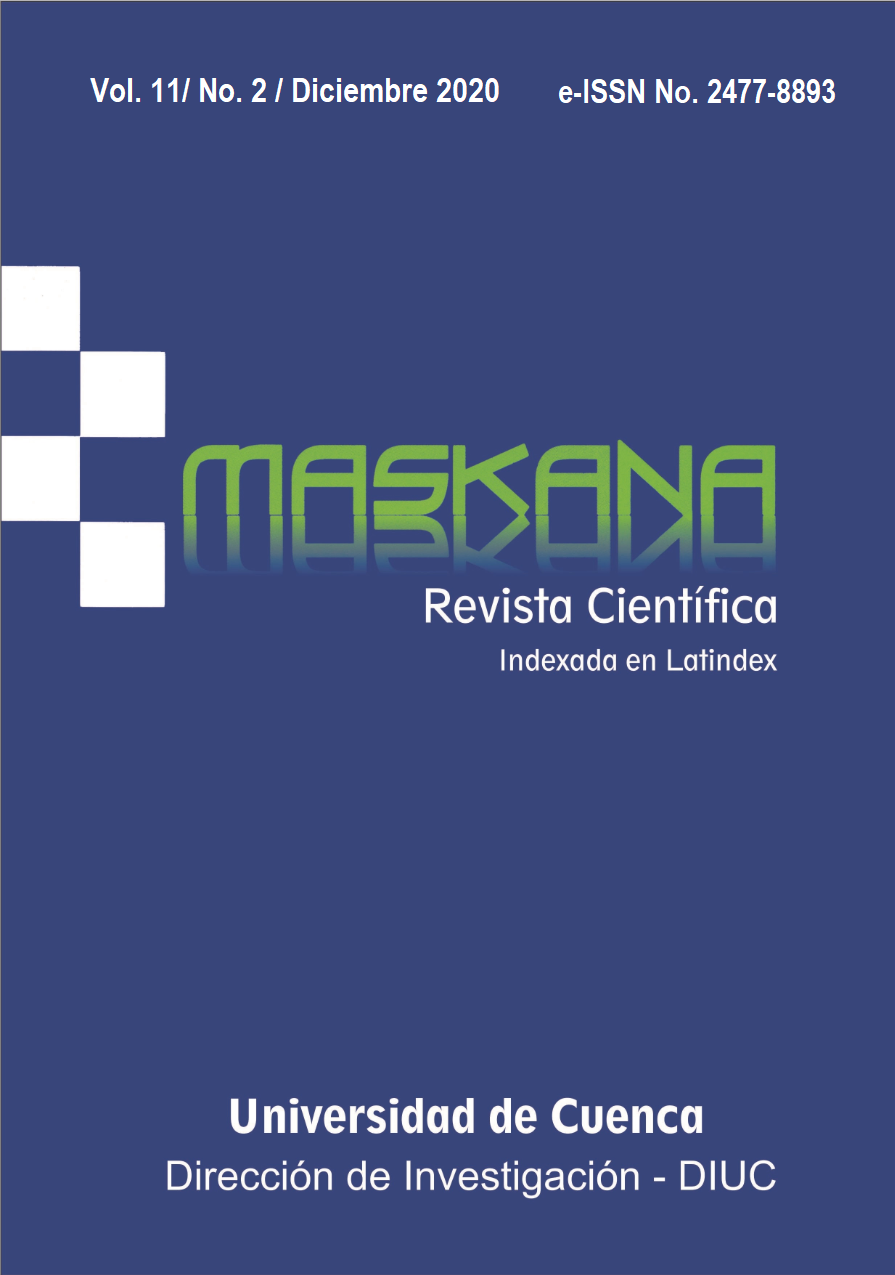Analysis of the peasants’ livelihood strategies in the Paute basin of Ecuador
DOI:
https://doi.org/10.18537/mskn.11.02.07Keywords:
Farming, peasantry, livelihood, household, typology, AndesAbstract
The article analyses the livelihood of peasant farmers in the rural area of three parishes in the Paute basin in Ecuador. First, the article presents the gathered empirical data of the study sites, respectively the Pichacay in the Santa Ana parish, Caldera in the Javier Loyola parish, and Llavircay in the Rivera parish. Applying the Chayanovian and van der Ploeg interpretation frames, three types of peasant households could be distinguished, based upon their specific organizational forms of producing and reproducing their livelihoods. The article concludes that a more in-depth analysis is needed in the peasant’s art of farming, particularly in their core balance of being conditioned by and linked to as well as resistant to the capitalist economy.
Downloads
Metrics
References
Bidogeza, J., Berentsen, P., De Graaff, J., & Oude Lansink, A. (2009). A typology of farm households for the Umutara Province in Rwanda. Food Security, 1, 321-35.
CGPaute. (2006). Dinámicas socio-económicas rurales en la cuenca del Paute. Consejo de Gestión de Aguas de la Cuenca del Paute. Proyecto de Desarrollo de la Cuenca del Río Paute, Ecuador.
Chayanov, A. (1974). La organización de la unidad económica campesina. Ediciones Nueva Visión, Buenos Aires, 1974. Editada en ruso en 1925 por el Instituto de Investigación Científica de Economía Agrícola de Moscú.
Ellis, F. (1993). Peasant economics: Farm households and agrarian development. Cambridge, UK: University Press.
Husson, F., Josse, J., Lê, S., & Mazet, J. (2009). FactoMineR: Multivariate exploratory data analysis and data mining with R. R package version 1.12. Available at http://factominer.free.fr.
Instituto Nacional de Estadística y Censos (INEC) (2010). VII Censo de Población y V de Vivienda. Resultados definitivos, provincias del Azuay y Cañar. INEC, Quito, Ecuador.
Instituto Nacional de Estadística y Censos (INEC) (2012). Clasificación Nacional de Actividades
Económicas (CIIU Rev. 4.0). INEC, Quito, Ecuador.
Jokisch, B. (2002). Migration and agricultural change: The case of smallholder agriculture in highland Ecuador. Human Ecology, 30, 523–550.
Jokisch, B., & Lair, B. (2002). One last stand? Forests and change on Ecuador's eastern cordillera. Geographical Review, 92(2), 235-256. https://doi.org/10.1111/j.1931-0846.2002.tb00006.x
Laurent, C., van Rooyen, J., Madikizela, P., Bonnal, P., & Carstens, J. (1998). Household typology for relating social diversity and technical change: The example of rural households in the Khambashe area of the Eastern Cape Province of South Africa. Agrekon, 38(S1), 190-208. https://doi.org/10.1080/03031853.1999.9524914
Martin, J. (2005). Los factores definitorios de los grandes grupos de edad de la población: tipos, subgrupos y umbrales. Geo Crítica / Scripta Nova. Revista electrónica de geografía y ciencias sociales, IX(190). Available at http://www.ub.es/geocrit/sn/sn-190.htm
Perret, S., Anseeuw, W., & Mathebula, F. (2005). Poverty and livelihoods in rural South Africa: Integrating diversity and dynamics of livelihoods. Case studies in Limpopo. Report on theme 1: Strategies for poverty alleviation and food security. Pretoria, South Africa: Post-Graduate School for Agriculture and Rural Development, University of Pretoria.
Perret, S., Carstens, J., Randela, R., & Moyo, S. (2000). Activity systems and livelihoods in the Eastern Cape Province rural areas (Transkei): Household typologies as socio-economic contributions to a LandCare project. Working Paper 2007-07. Pretoria, South Africa: University of Pretoria / CIRAD, CIRAD Tera num. 2000/28.
Perret, S., & Kirsten J. (2000). Studying the local diversity of rural livelihoods systems: An application of typological techniques for integrated rural development support in the Eastern Cape (South Africa). Working Paper 2005-05. Pretoria: Department of Agricultural Economics, Extension and Rural Development, University of Pretoria.
R Development Core Team (2007). R: A language and environment for statistical computing. R Foundation for Statistical Computing, Vienna, Austria. Available at http://www.R-project.org.
Vandenberghe, J., & Vanacker, V. (2008). Editorial: Towards a system approach in the study of river catchments. Geomorphology, 98, 173-175. https://doi.org/10.1016/j.geomorph.2007.01.025
Vanegas, R., Demoulin, F., & Henry, S. (2012). Report on the field survey performed on Pichacay, Caldera and Llavircay study areas, Paute catchment, Ecuador. Technical report. Faculty of Agricultural Sciences (University of Cuenca, Ecuador) and Department of Geography (University of Namur, Belgium).
van der Ploeg, J. D. (2013). Peasants and the art of farming: A Chayanovian manifesto. (Agrarian Change and Peasant Studies Series; No. 2). Fernwood. Available at https://edepot.wur.nl/424204
Weiss (2007). In J. D. van der Ploeg (2018). The new peasantries. London, UK: Routledge, https://doi.org/10.4324/9781315114712
Whatmore, S. (1994) Farm household strategies and styles of farming: Assessing the utility of farm typologies. In J. D. van der Ploeg & A. Long (Eds.) Born from within: practice and perspectives of endogenous rural development, pp. 31-37. Assen, the Netherlands: Van Gorcum.
Published
How to Cite
Issue
Section
License
Copyright © Autors. Creative Commons Attribution 4.0 License. for any article submitted from 6 June 2017 onwards. For manuscripts submitted before, the CC BY 3.0 License was used.
![]()
You are free to:
 |
Share — copy and redistribute the material in any medium or format |
 |
Adapt — remix, transform, and build upon the material for any purpose, even commercially. |
Under the following conditions:
 |
Attribution — You must give appropriate credit, provide a link to the licence, and indicate if changes were made. You may do so in any reasonable manner, but not in any way that suggests the licenser endorses you or your use. |
| No additional restrictions — You may not apply legal terms or technological measures that legally restrict others from doing anything the licence permits. |









